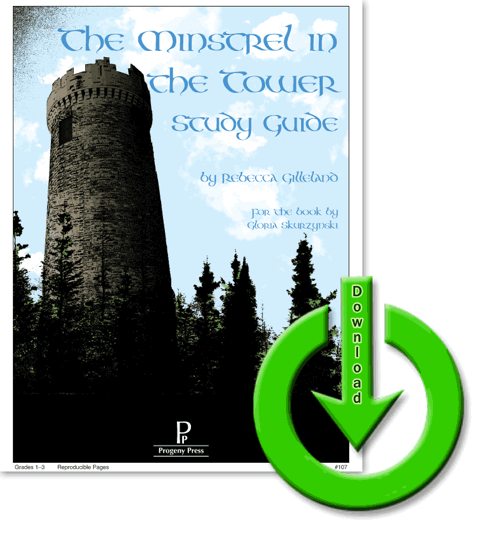I think some literature study is important at pretty much all ages. Even the youngest schoolchild is capable of doing some lit-related work, and all of that will pave the way to more easily grasping literary analysis when they hit high school and college. Learning about some basic concepts, such as similes and personification, and learning to think more critically about some of the material you are reading -- that is something that they can do in elementary school. Not for every book a child reads, but I think it is great to do it for some of them.

This study is intended for 1st-3rd grade, and my two are older than that (4th and 6th), but it was still worthwhile, especially for a summer study.
Like all Progeny Press Guides, this starts off with some background information and some pre-reading suggestions. We waited for our book to arrive, and then dug in. For this study, we ended up getting caught up in the Before-you-read Activities. She has suggestions that didn’t take a lot of time (learn about the difference between a minstrel and a jester, and find some locations on a map). Then there were some more complex suggestions. We ended up spending a few days looking into medieval legends, such as the story of Robin Hood. We watched the 1952 Disney movie and read a couple fairly easy versions of that legend. We also read a book about St. Francis. Bottom line was that the Before-you-read ended up taking us over a week!
At that point, we were anxious to get started with the story. The book contains eight chapters, and the E-Guide has a section for each of those chapters. Because my children are older, we could easily read a chapter and do all of the study guide exercises in a single day. Some days we did more than one chapter. For children closer to 1st grade, I would definitely take it a bit slower.
For each chapter, the study guide would start with vocabulary. There were a variety of methods used for studying vocabulary. In some cases, the student is to tell what he thinks the word means and then look it up to see what the dictionary says. Sometimes there are matching exercises, or fill in the blanks. There are sixty vocabulary words in total. In many cases, my kids did already know the words, but there were quite a few that they did not know, such as stead, wimple, tatterdemalions, palfrey, etc.
The other component of each chapter’s guide is comprehension questions, which include some basic questions and a couple of “Dig Deeper” questions. Most of the questions are fairly straight-forward. “What changed his mind?” is something that is fairly obvious in the story, if you are paying attention. Others do make the child speculate a bit, like one regarding an illustration in the book, “How do you think Alice felt in this picture?”
The Dig Deeper questions tend to be related to Bible verses. The child reads a verse or two, and then relates that back to the story. In chapter 5, for instance, there are three verses (Psalm 118:14, Isaiah 41:10, and Psalm 23:4). The student is asked to summarize the verses, and to address where we get the strength to do what is right.
Once you are through the book, there are some After-you-read Activities. We did not choose to do any of these, but there are art suggestions, writing assignments, oral reports, and more. In addition, there is a list of additional resources, mostly books, that you could use to follow up on this study.
As far as actual lit study, as would be expected, that is pretty light at this level. Most of the traditional lit study aspects in this study include understanding the background and context for the story, and a few questions that address things like predicting what might happen next. Looking at titles for the 4th-6th grade level, such as The Sword in the Tree and Mr. Popper’s Penguins (both of which are being reviewed by other Crew Members right now!), these are definitely at a level that is completely appropriate for my upper elementary kids.
I’m glad we used Minstrel in the Tower, since the timing was so perfect, and my children did learn from it. However, I need to accept that they are definitely too old for the lower elementary materials now.
A sad day indeed.
However, there are guides for a number of Little House books, and that sounds perfect.
Go check out some of the other reviews, as they are talking about different levels and more titles!



1 comment:
My 8 year old daughter loves using the Minstrel in the Tower guide! It was our first experience with Progeny Press, but it won't be our last!
Post a Comment